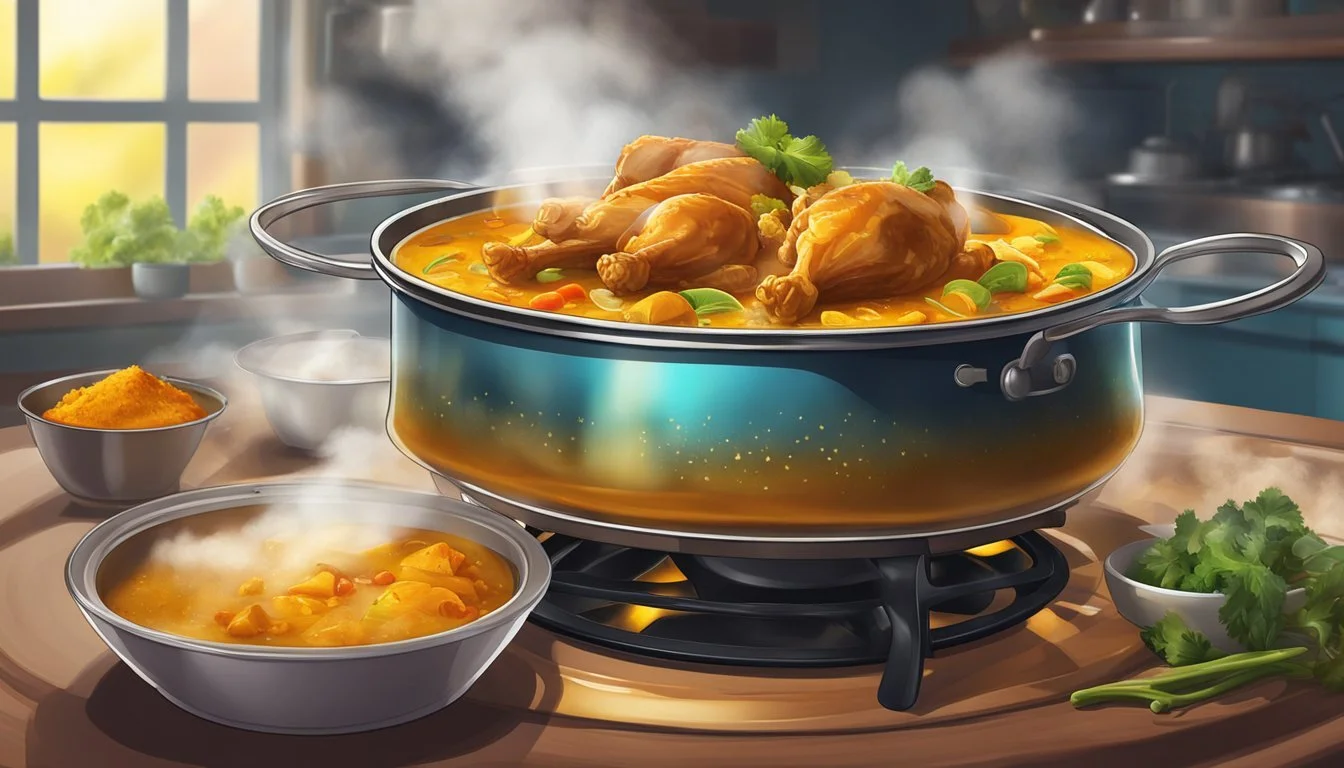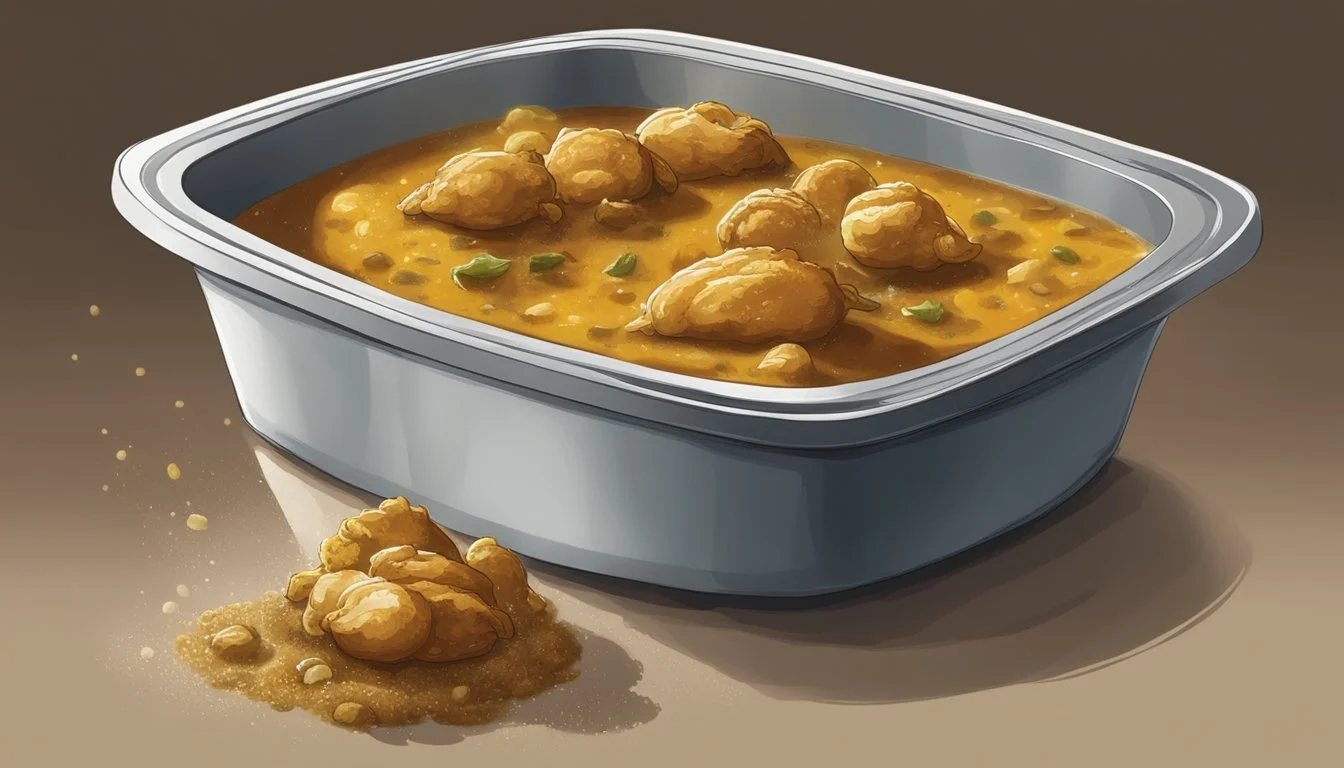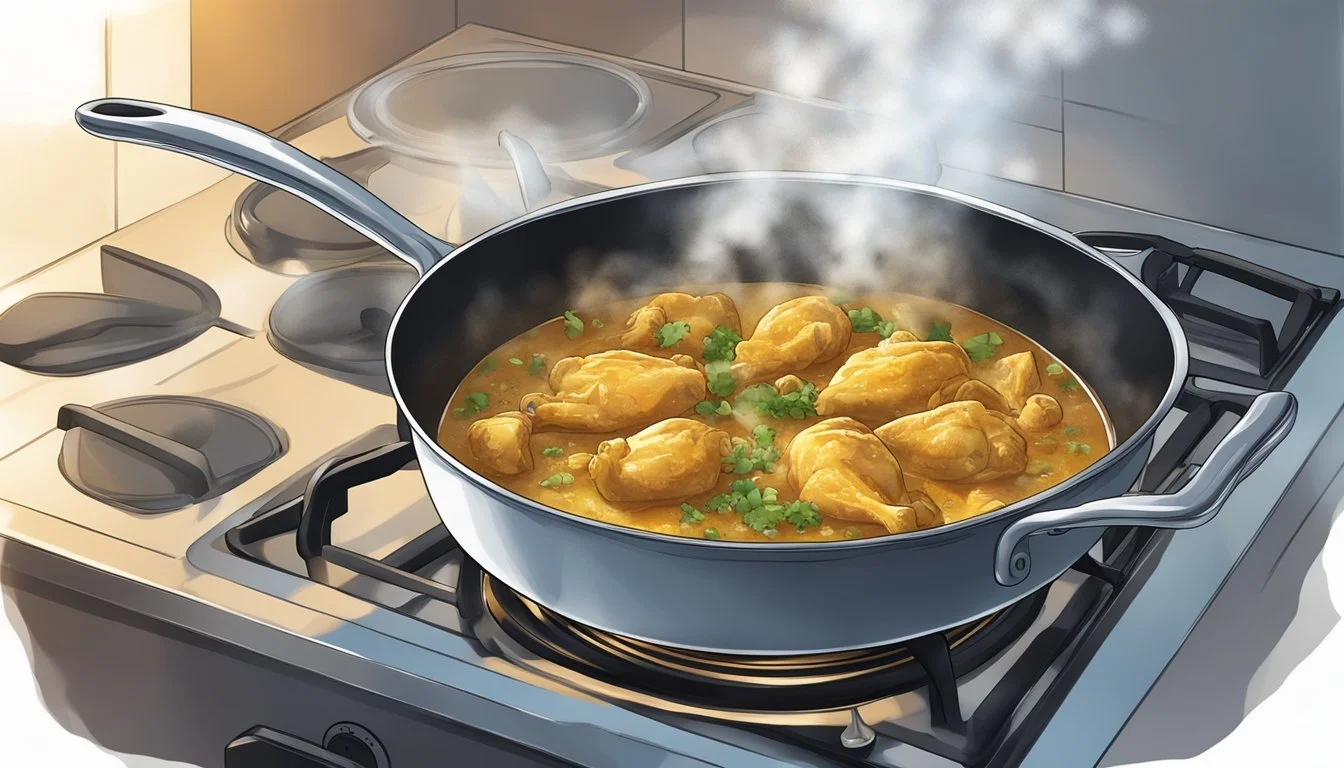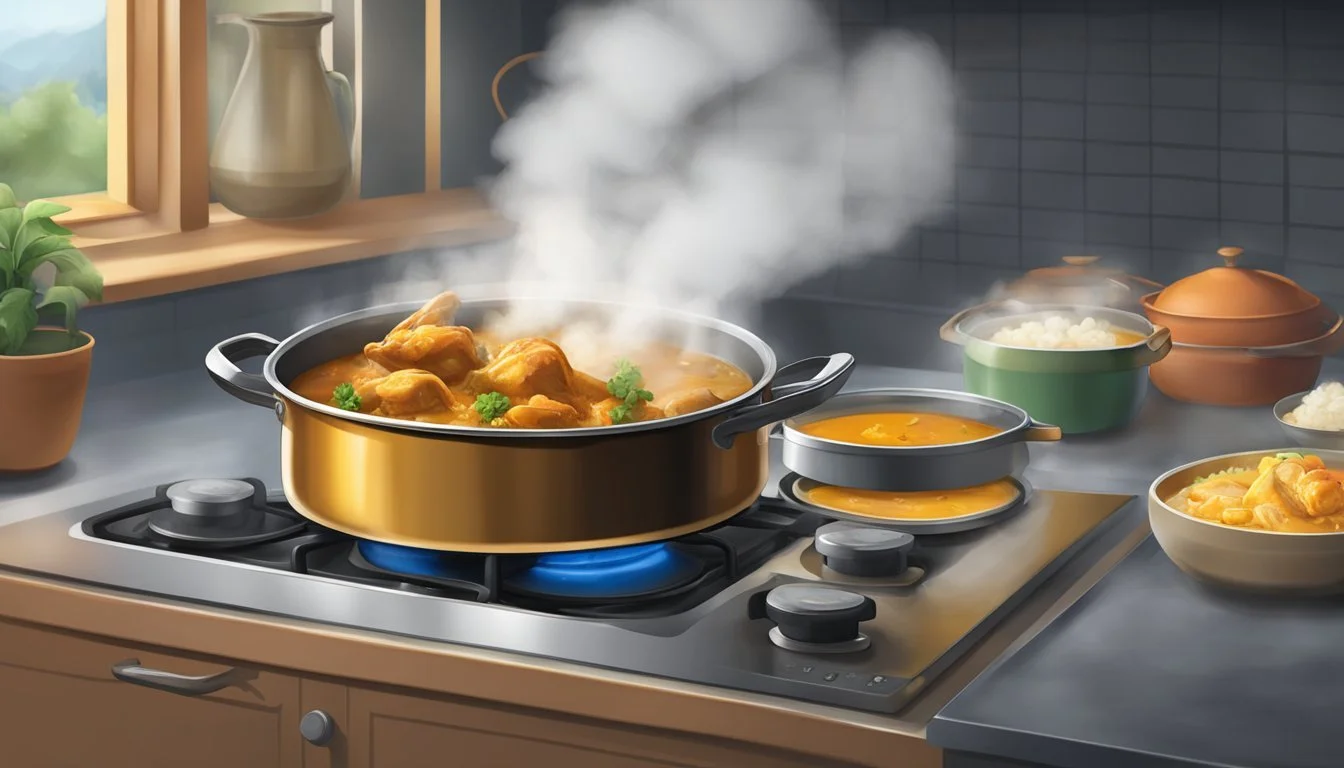How Long Does Chicken Curry Last?
Essential Storage Guidelines
Chicken curry is a beloved dish in many households, known for its rich flavors and aromatic spices. Yet, many wonder about how long it can be safely stored. Chicken curry can last in the fridge for about 3-4 days if stored properly in an airtight container at temperatures below 40°F (4°C). This ensures that the curry maintains its quality and minimizes the risk of foodborne illnesses.
Proper storage plays a vital role in extending the shelf life of chicken curry. Airtight containers are a must to keep bacteria at bay and preserve the dish's freshness. Freezing chicken curry is another viable option, allowing it to be stored for up to 2-3 months without compromising on taste or safety.
Understanding the longevity of chicken curry not only helps in meal planning but also contributes to better food safety practices in the kitchen. By following these guidelines, you can enjoy your favorite dish without worrying about spoilage.
Understanding Chicken Curry Preservation
Proper storage and awareness of factors affecting the shelf life of chicken curry can significantly reduce spoilage and ensure safe consumption.
Significance of Proper Storage
Chicken curry should be stored in an airtight container to maintain freshness and prevent contamination. Properly refrigerating chicken curry at or below 40°F (4°C) can extend its shelf life to 3-4 days.
For long-term storage, freezing chicken curry is an effective method. When frozen, chicken curry can last for 2-3 months. Use freezer-safe containers or ziplock bags to avoid freezer burn. Clearly labeling the storage date is crucial.
Factors Affecting Chicken Curry Shelf Life
The storage temperature plays a critical role in the longevity of chicken curry. Refrigeration, typically below 40°F (4°C), keeps it safe for up to 4 days. If left at room temperature (70°F or 21°C), it should be consumed within 2 hours to prevent bacterial growth.
The cooking method influences the dish's shelf life. Thoroughly cooked chicken curry, with properly cooked spices and ingredients, tends to last longer. Partially cooked or undercooked dishes are more prone to spoilage.
Ingredients, particularly spices, have antibacterial properties that can slightly extend shelf life. However, they are not a substitute for proper storage.
Understanding these factors ensures chicken curry remains delicious and safe to eat.
Refrigeration Techniques
Storing chicken curry properly in the fridge and freezer can significantly extend its freshness. Factors such as cooling methods, container choice, and storage temperature play pivotal roles.
Cooling and Storing Chicken Curry in the Fridge
Chicken curry should be cooled quickly before refrigeration to reduce the risk of bacterial growth. It's recommended to let the curry cool to room temperature within two hours. Once cooled, transfer it to an airtight container. This minimizes exposure to air and prevents moisture loss.
The ideal storage temperature in the fridge is below 40°F (4°C). This temperature slows down bacterial activity, keeping the curry safe to consume for 3-4 days. Regularly check the fridge temperature with a thermometer to ensure it remains consistent.
Extending Shelf Life Through Freezing
Freezing chicken curry can extend its shelf life up to 3 months. For best results, use freezer-safe containers or ziplock bags. When using ziplock bags, remove as much air as possible before sealing. This helps in preventing freezer burn.
Label each container with the date before freezing. This helps track the storage duration and ensures the curry is used within a safe period. When ready to use, thaw the curry in the fridge overnight for safe consumption. Reheat it thoroughly to an internal temperature of at least 165°F (74°C) before serving.
Visual and Sensory Indicators of Spoilage
Chicken curry spoilage can be detected through various visual and sensory cues. These indicators are essential for determining whether the dish is still safe to consume.
Color Changes and Discoloration
Chicken curry may exhibit color changes when it starts to spoil. Fresh chicken curry typically has a rich, consistent color. As it spoils, the color may become dull or darker. Look for discoloration in the chicken pieces or the curry sauce itself. Any development of gray or green hues indicates spoilage.
Mold growth can also be a clear visual sign. White or green fuzzy patches suggest fungal contamination. Ignoring these visual changes can lead to serious health risks if consumed.
Texture and Odor Assessment
The texture of chicken curry changes significantly when it starts to spoil. Fresh curry should have a smooth, consistent texture. Spoiled curry may develop a slimy feel. This sliminess comes from bacterial activity and should not be ignored.
Odor is another critical indicator. Fresh chicken curry has a characteristic, pleasant aroma. Spoilage produces an unpleasant odor, often described as sour or rancid. Trust your senses; if the curry smells off, it probably is.
By paying close attention to these visual and sensory indicators, one can effectively assess the edibility of chicken curry.
Safety Tips and Foodborne Illness Prevention
Ensuring the safety of chicken curry involves proper handling, storage, and reheating techniques. These steps are critical in preventing foodborne illnesses and maintaining the quality of the dish.
Understanding Food Poisoning Risks
Foodborne illnesses can be caused by bacteria such as Salmonella and Campylobacter, often present in raw or undercooked chicken. When chicken curry is stored improperly, these bacteria can multiply to dangerous levels.
Symptoms of food poisoning include nausea, vomiting, diarrhea, and abdominal pain. To prevent these health issues, chicken curry should be refrigerated at temperatures below 40°F (4°C) and consumed within 3-4 days. For extended storage, freezing is recommended.
Proper Handling and Reheating Guidelines
When storing chicken curry, use airtight containers to prevent contamination. This helps maintain the dish’s quality and reduces the risk of bacterial growth.
Reheating chicken curry requires it to reach an internal temperature of 165°F (74°C). Use a food thermometer for accuracy. Whether reheating in a microwave, oven, or stovetop, stir the curry occasionally to ensure even heating.
Avoid reheating multiple times, as this can increase the risk of food poisoning. Always practice good hygiene, such as washing hands and utensils, to prevent cross-contamination during preparation and storage.
In summary, proper handling, storage, and reheating are key to enjoying chicken curry safely.
Freezing and Defrosting Chicken Curry
Freezing chicken curry is an effective way to extend its shelf life while preserving its flavor and texture. Proper thawing and reheating are crucial to maintain the quality and ensure food safety.
Best Practices for Freezing Chicken Curry
Freezing chicken curry requires careful preparation to maintain its taste and safety.
Cool Quickly: First, ensure the curry cools quickly after cooking to prevent bacterial growth. Spread it out in a shallow dish or use an ice bath.
Portion Appropriately: Divide the curry into portions. Smaller portions freeze more evenly and are easier to defrost. Freezer-safe containers or freezer bags are ideal.
Use Airtight Containers: Select airtight containers or heavy-duty freezer bags to store the curry. Leave some space for expansion. This helps prevent freezer burn and ice crystals.
Label Containers: Clearly label each container with the contents and the freeze date. Chicken curry generally lasts 2-3 months in the freezer.
Thawing and Reheating Frozen Chicken Curry
Proper thawing and reheating are essential to maintain the curry’s quality and ensure it’s safe to eat.
Thaw Safely: The safest method is to thaw the curry in the refrigerator, which can take several hours or overnight. For quicker thawing, use the microwave's defrost setting, stirring occasionally.
Reheat Thoroughly: Reheat the curry until it reaches an internal temperature of 165°F (74°C). Stovetop reheating is preferred for even warming. If using a microwave, stir halfway through to avoid cold spots.
Avoid Refreezing: Never refreeze chicken curry that has already been thawed. This can affect texture and increase the risk of bacterial growth.
Following these steps will maximize the quality and safety of your chicken curry.
Enhancing the Longevity of Chicken Curry
Extending the shelf life of chicken curry involves careful selection of ingredients, proper cooking methods, and effective storage techniques. These practices help maintain the quality and safety of the dish.
Selection of Ingredients and Cooking Method
Choosing the right ingredients significantly affects the shelf life of chicken curry. Using fresh chicken and vegetables reduces the risk of spoilage. Incorporating spices with antimicrobial properties, like turmeric and garlic, can enhance preservation.
Cooking chicken curry thoroughly is crucial. Bringing the curry to a boil ensures that any harmful bacteria are eliminated. Avoid undercooking as it can lead to rapid bacterial growth.
Adding dairy products, such as yogurt or cream, should be done cautiously. Dairy can shorten the lifespan of the curry if not stored correctly.
Airtight Containers and Labeling Techniques
Storing chicken curry in airtight containers is essential for preserving its freshness. Airtight containers prevent exposure to air, which can cause the curry to spoil faster. Using containers with secure lids helps maintain the flavor and quality of the dish.
Labeling the containers with the date of preparation is crucial. Use waterproof markers to ensure the labels remain legible. This practice helps keep track of how long the curry has been stored and ensures it is consumed within a safe timeframe.
For extended storage, freezing the curry in freezer-safe bags or containers can also be effective. Frozen chicken curry can last up to three months, provided it is reheated safely before consumption.
Managing Leftovers and Reducing Waste
Effective management of leftover chicken curry involves proper portioning and storing, as well as utilizing leftovers before their expiration. This helps in maintaining freshness, extending shelf life, and reducing food waste.
Portioning and Storing Leftover Chicken Curry
When storing leftover chicken curry, use airtight containers or ziplock bags to maintain freshness. Remove excess air before sealing the containers to keep the curry from spoiling quickly.
Label the containers with the date of storage to keep track of the expiration. Store the curry at a temperature below 40°F (4°C). Leftover chicken curry can typically last 3-4 days in the fridge. For longer storage, freezing is an option. Chicken curry can be frozen for up to 3 months. Ensure proper reheating to at least 165°F to eliminate any harmful bacteria.
Utilization of Leftovers Before Expiration
Utilizing leftovers effectively can reduce waste. Incorporate leftover chicken curry into other meals within the 3-4 day timeframe. Add fresh garnish or vegetables to refresh the dish. Reheat thoroughly before consuming to preserve taste and ensure safety.
Freeze any remaining curry after 48 hours if it cannot be consumed promptly. Use a no-frost freezer for the best results. Move the curry to the freezer with minimal delay to maximize its shelf life. Label and date the frozen curry to manage its use efficiently.
Diverse Variations and Special Considerations
The longevity of chicken curry depends on the type of curry, ingredients used, and proper storage techniques. Each variation of curry requires unique considerations to maintain its quality and safety.
Adjustments for Different Types of Curry
Butter Chicken: This popular Indian dish can last up to 3-4 days in the refrigerator if stored in an airtight container. Freezing can extend its shelf life to 2-3 months.
Tikka Masala: Similar to butter chicken, tikka masala stays fresh for 3-4 days in the fridge. Proper freezing allows it to last up to 3 months without losing quality.
Spicy Curries: Spicier curries often contain ingredients like chili peppers and other spices, which can sometimes act as natural preservatives. These can last 3-5 days in the refrigerator but should still be checked for any signs of spoilage.
Handling Non-Chicken Based Curries
Vegetable Curry: Vegetable curries usually have a shorter shelf life due to the presence of various perishable ingredients. They typically last 1-2 days in the fridge. Freezing can extend their shelf life to 6-8 weeks.
Lamb Curry: Lamb curries, like chicken curries, benefit from refrigeration at below 40°F (4°C). They can last around 3-4 days in the refrigerator and can be frozen for up to 2-3 months.
Proper reheating is essential for all types of curries. Ensuring they reach an internal temperature of at least 165°F (74°C) eliminates potential bacteria, making the dish safe to consume.








